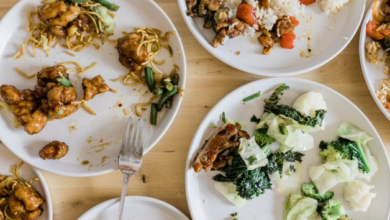Secrets from the man behind Hong Kong’s most popular restaurants

(CNN) — Hong Kong is widely considered one of the most challenging cities in the world to operate a restaurant — a roiling cauldron of changing tastes, cleaver-sharp competition and unsavory economics.
Right at the heart of its culinary world, with connections to at least half of its hottest tables, is publicist Geoffrey Wu.
An atypical publicist

Geoffrey Wu is the publicist behind many of Hong Kong’s toughest tables.
Maggie Hiufu Wong/CNN
“I wouldn’t say we’re better at our job than other people. I’d say we’re different,” he tells CNN Travel in The Baker and The Bottleman, a new casual bakery and natural wine bar by celebrity British chef Simon Rogan, where he’s agreed to spill some of the secrets of Hong Kong’s dining scene.
After being expelled from the University of Science and Technology in Hong Kong for “skipping too many classes to play cards at McDonald’s,” Wu joined Amber, the famed French restaurant under the helm of Richard Ekkebus, as operations staff in 2005.
Over the next few years he took on various marketing roles for different companies — but always found himself back in the food and beverage industry. In 2012, he opened his F&B consultancy firm.
Wu isn’t your typical food and beverage publicist. He isn’t congenial. He’s known for occasionally yelling at clients for making a mistake, or members of the media he feels haven’t done their research.
“I am not afraid to speak up — people know that for sure. Sometimes you need a consultant who is straightforward about things that must be fixed. We aren’t here to massage your ego. We are here for the results. We are here to win,” says Wu, sounding more like a football coach than a PR professional.
“If I wanted to please everyone, I’d go sell ice cream. Luckily, most of my clients understand.”
Among these clients is Yenn Wong, founder and chief executive officer of JIA, a restaurant group behind popular award-winning Hong Kong eateries like Mono and Duddell’s.
“The Forks and Spoons understand and personalize the needs of each concept and is always staying very current with the relevant strategies to ensure we as clients get the most publicity to our target audience, which ultimately delivers positive revenue growth,” Wong tells CNN Travel.
‘The most cutthroat F&B market in the world’

Dinner tables at Bluhouse, a new Italian restaurant at Rosewood Hotel, are often booked out two months in advance.
Courtesy Bluhouse
One of the important duties for a F&B publicist is to be physically present at a restaurant, according to Wu. He is either tinkering with menus, sampling new dishes or simply meeting with clients.
It could be anything from translating the restaurant’s a la carte menu from Chinese into English to working with chefs on choosing dishes for a tasting menu, “so you can see what’s happening and let the staff know that you care,” says Wu.
For instance, later that day, he says he’s having a trial lunch at Bluhouse, a new casual Italian dining concept at the Rosewood Hotel in Kowloon.
“At a tasting, we’ll look at everything — taste, presentation and temperature of the food. We also look at furniture, operation flow, pricing, etc.,” he says. “No new restaurant is ever perfect, but let’s try to minimize the error.
“We have only worked with clients in Asia — Hong Kong, Macao, Maldives, etc — but I really believe that Hong Kong is the most cutthroat food and beverage market in the world.”
His claim isn’t baseless.
Getting the opening right is essential in Hong Kong due to its competitiveness.
“It’s such a condensed market,” says Wu.
“People always talk. Hong Kong customers are also very knowledgeable. If you don’t get it right from the get-go, you have to revamp many things. The question is — will the customers give you a second chance? There are so many choices that chances are they’d go somewhere else.
“So to build a successful restaurant, it’s important to make sure the opening is a strong one. With good word of mouth then businesses will come. It’s that simple.”
Case in point: Bluhouse. It opened in June and dinner reservations are full through October and November at the time of the writing.
Chefs have a bigger role than ever
Hong Kong’s F&B industry has evolved rapidly in the last decade, thanks in part to the arrival of Michelin Guide in 2009 as well as the rise of social media and the local food community.
Chefs in Hong Kong have experienced a shift in their roles.
“Some 20 years ago, chefs mostly just cooked and served food,” says Wu.
“Now in 2022, there is also this thing called relationship building. Chefs have to show their faces. They have to touch the tables and to take pictures with guests. The job of a chef is much bigger than before. It all goes back to a need for human connection. Customers, media, influencers, bloggers — everyone wants to have a human connection.”
And it just makes good business sense — guests are more likely to return to a restaurant where they have established a relationship with the chef.
The problem, of course, is that chatting with diners doesn’t come naturally to all chefs. That’s where Wu comes in.
“We just encourage and encourage and encourage them,” he says.
He cites Manav Tuli of modern Indian restaurant Chaat — which is also located at the Rosewood — as a success story. Chaat opened in 2020 and won its first Michelin star two years later.

Chef Manav Tuli of Rosewood Hong Kong restaurant Chaat.
Nora Tam/SCMP/ZUMA Press
Unique dishes like Tuli’s showstopping tandoori lobster — Indian food with a Hong Kong seafood twist — and a team of knowledgeable staff which communicates the stories of the food beautifully are some of the reasons Chaat is one of Hong Kong’s hardest to book restaurants.
Tables are released two months in advance and swept up in minutes.
But the biggest star of Chaat is Tuli, considered one of the city’s most beloved culinary figures right now.
“When he arrived two years ago, he didn’t know the landscape or culture of Hong Kong,” said Wu. “He is a quiet person but we align in a certain way as we both have a drive. For him, moving his family to Hong Kong with him, he wants to make this a success. So we have been working very closely since day one on that,” said Wu.
He encouraged Tuli to meet the guests and fellow chefs, joining him at events and meals as the chef built a name for himself.
Cold-calling isn’t building a relationship

Wu recently organized a collaboration dinner between Chaat and Forum, a Michelin three-star Cantonese restaurant.
Maggie Hiufu Wong/CNN
On his days off, Wu organizes lunches for media, including revered industry critics, and chefs he works with or may work with in the future.
These often take place at venues Wu doesn’t work for, from Hop Sze, a no-frills Cantonese diner that has a six-month wait list, to the Forum Restaurant, a Chinese joint with three Michelin stars.
“I worked til 4 a.m [this morning]. I only joined because Geoffrey Wu arranged this lunch,” one food critic tells CNN Travel as he enters the private dining room inside Forum.
The menu of the day includes all kinds of dishes — from street food-style rice rolls to classic Cantonese sweet and sour pork and the restaurant’s famous braised abalone.
As with most lunches with Wu, there’s also an off-menu surprise.
Adam Wong, the executive chef, and CK Poon, the general manager, come in with a pushcart near the end of the meal.
“We are thinking of adding this to the next menu update,” says Poon as he caramelizes sugar for the candied apple fritter (ba si apple), a Northern Chinese-style dessert, on-site.”It’s the first time we’re doing this — so let us know what you think.”
The five-hour lunch wraps up with industry gossip over bottles of cognac.
But Wu is never not working.
He punctuates gatherings with potential collaboration ideas (Tuli and Wong exchanged ideas that day on a hookup between the two restaurants), and fills in moments of silence with jokes to keep the meal entertaining.
“I always say that I’m the chief entertainment officer,” says Wu. “Building relationships takes time. Cold-calling and sending press releases aren’t building a relationship.”
Flavor is king, but there it’s not everything

Wu recently worked with Yong Fu, an award-winning high-end Ningbo restaurant, to help refine its menu for local tastes.
Maggie Hiufu Wong/CNN
At the end of the day, connections won’t get you far if the food isn’t good or the restaurant refuses to evolve.
“Flavor doesn’t lie,” says Wu. “But everything — restaurants, bars, chefs — has a shelf life. It’s impossible to stay number one forever. You need to keep coming up with new ideas to continue to elevate the restaurant.”
It could be doing more tableside services, educating guests about the dishes, or simply adding a pre-dessert bite that cleanses the palate, he says.
One of Wu’s latest tasks is to edit the menu at one of his new clients, Yong Fu, a Michelin-starred restaurant that specializes in high-end cuisine from China’s east coast Ningbo region.
He’d like to trim down the original one-inch-thick book and has created a tasting menu to offer a more curated ordering experience.

In Hong Kong, Ningbo cuisine is often confused with Shanghai cuisine. Hence, Wu has worked with Yong Fu to create a tasting menu for the local diners.
Yong Fu
In Hong Kong, Ningbo cuisine is often confused with Shanghai cuisine. The tasting menu includes dishes that diners may not know enough about to order — a “sticky” boiled wax gourd and yellow croaker fish in sour broth, for example — that amplify the trinity of Ningbo cuisine’s star flavors: “savory, umami and sticky.”
Yu Qiong, Yong Fu’s manager, is there to offer an in-depth explanation on each of the dishes.
“These are some of the things that will enrich the whole dining experience,” says Wu. He compares marketing restaurants with running: “Keep refining. Keep pushing. My belief is, just don’t stop until you are at the finishing line.”
It’s an apt metaphor. The avid runner wakes up at 5:45 a.m. on most days to fit in exercise.
“I enjoy Hong Kong on quiet mornings when the city hasn’t woken up yet. When you run, you see a lot of things and think about a lot of things,” says Wu.
As for what was on his mind that particular morning?
“I was thinking about our interview. I was thinking about not swearing. I did well — I only swore once.”
Top image: Indian restaurant Chaat’s pork cheek vindaloo. Courtesy of Chaat.
Source link





